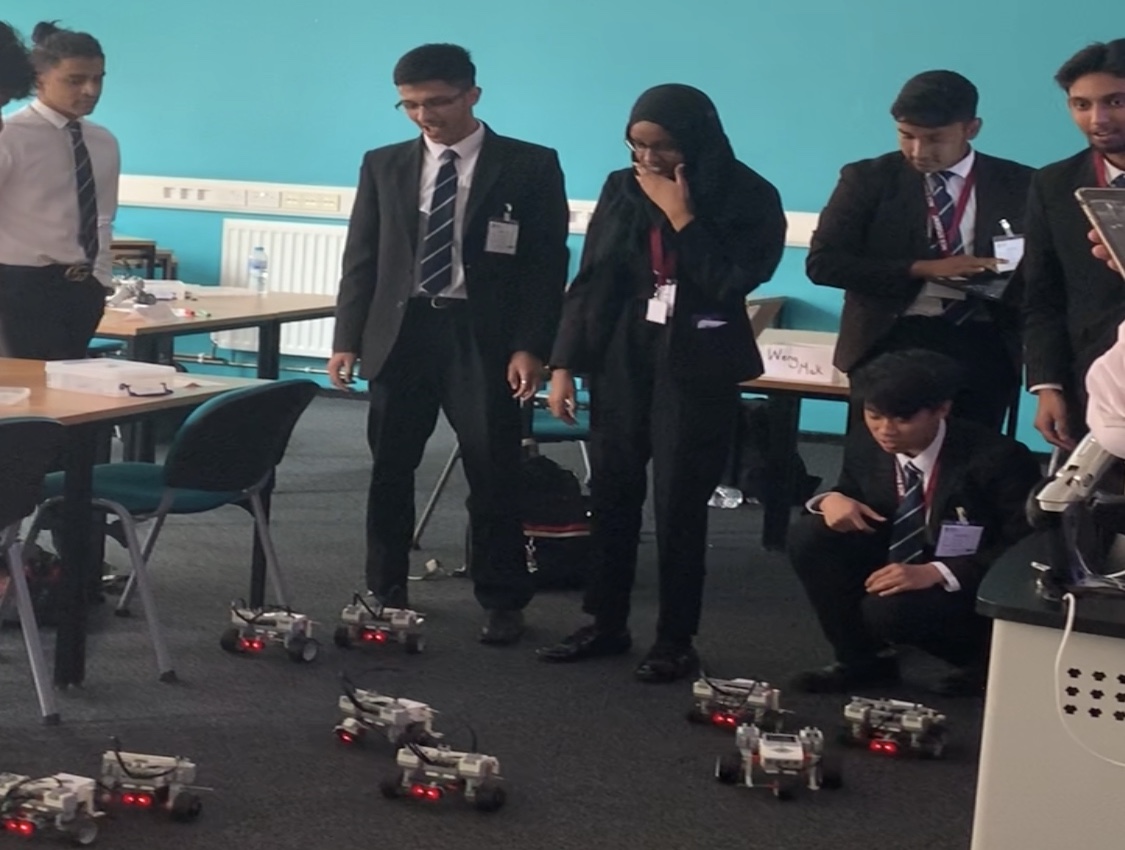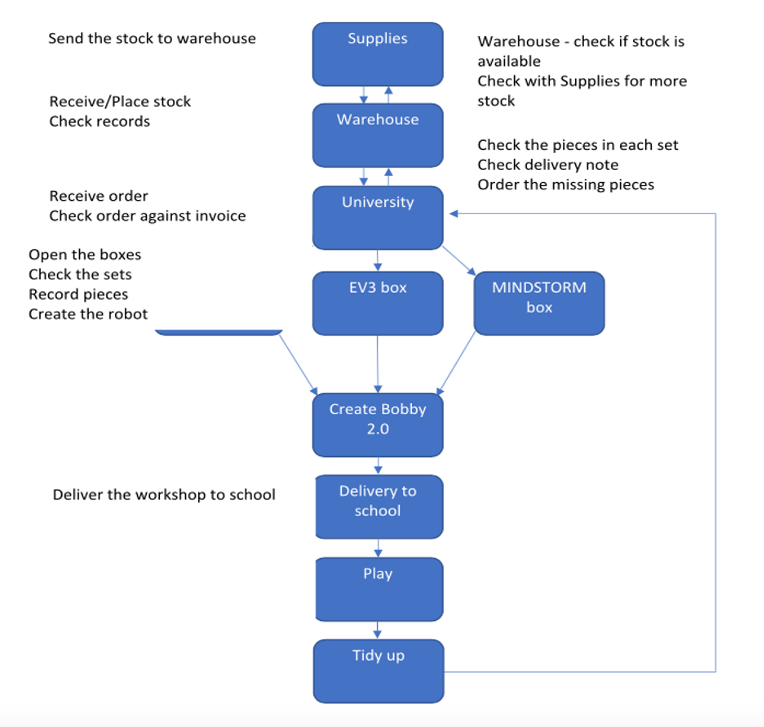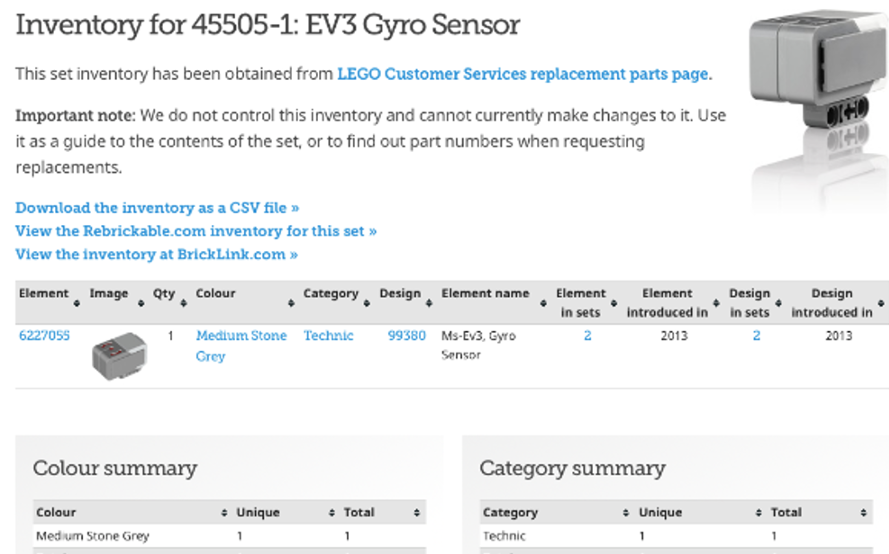A Lego Education encourages children to get involved in engineering by visiting schools around the world to give them hands-in engineering experience using Lego. Children have opportunities to meet engineers and learn to create solutions using Lego that will increase their knowledge and desire to become engineers. The UK government has supported Lego Education and funded the ‘Year of Engineering’ campaign. Government Year of Engineering Envoy, Steven Metcalfe, explained the purpose of the roadshow that is a major element of the campaign:
The Engineers of the Future roadshow will give school children across the country a unique perspective on the exciting opportunities engineering presents when it hits the road in the autumn. ~ Steven Metcalfe cited in Ghani, 2018

What is Inventory management?
For most businesses that rely on operation control through an infrastructure of logistics, the form of management is essential to maintain Inventory. The word Inventory is a stock of physical goods that are used by a business to provide services for the consumer. In the case of ‘Lego Education’, the inventory comes in the form of lego parts which provides creative and interactive projects to young pupils.
Inventory management will allow the young pupils to fully utilize all the lego parts and build their fun and interacrive project without the worry of missing parts.

EV3 Project
DR Barikzai has offered me the opportunity to contribute to ‘Lego Education’ and collaborate with a group of 5 In a project which aims to improve the management of lego parts within the organisation. Dr Barikzai is involved in developing a learning enrichment environment at local schools to give opportunities for students to build up their IT skills and hopefully encourage some to engage in further study in the subject area. Equipment, such as Lego kits, Arduino boxes, a mini robot, as well as other kits, are used in these activities and we, as a group, have been given the task of developing a database system which has an inventory and keeps track of all the Lego parts stored within the school.
The problem we had to solve
Whenever there was an event to teach young students, Dr Barikzai always had to check the Bobby 2.0 set that was used by the students, charge the batteries, prepare the other smaller Lego sets, and then go to various schools where the children would then play and code with the sets for the session. Upon coming back to the office, various pieces were sometimes missing. The most common piece that was always missing is the tracking ball, which has resulted in having to order this part on multiple occasions. There is no facility (apart from manually checking) to see if other pieces are missing. There are officially 32 boxes for the project, but in the office, there are additional boxes that are not specifically linked, which could lead to confusion arising. There are three types of boxes: EV3, WeDo and Mind storm. We had to solve this issue by developing an inventory control management system by building a database which allows staff to track each Lego piece of each kit.
Client Requirments (Dr Barikzai)
- Create a database system for the Lego parts.
- Make sure the system has a well-defined and easy-to-use user interface for the client to use effectively.
- Deliver a presentation explaining how the system was developed and how it is operated and maintained.
- Make sure the completeness of the projects follows all the client's requirements and no deviation has been made.
What we decided to use
For this project, we had to consider the correct approach for building the structure and therefore decided to use templates from Database access and importing CSV files into Microsoft Excel to process the large set of data of lego parts. Instead of using metric systems to calculate each piece within each box, we decided to reference the amount from brickset (https://brickset.com/inventories/31313-1) and from there design a well structured Conceptual Entity Relationship Diagram.
My task
I had the task to gather the dataset and import them correctly into excel sheets. I’ve also helped develop the logical Entity Relationship Diagram for the database to provide functionality and meet the requirements of the client.
The design stage (Functionality)
Using the imported data from brickset, we developed a structure within the database to create relationships which perform its functionality to organise and keep the parts under surveillance. We designed a structure for the database based on the dataflow of the Lego Parts.

Example of DataSet Collected

Database
The video used for database

Outcomes/ Learnings conclusion
As a team, being assigned the task of finding a solution in keeping a track of lots of Lego pieces organised using a type of system which would be easy to use by Dr Barikzai was a challenge our team tackled and has successfully obtained a working solution into sorting all the pieces into a database which will enable the client to filter out Lego pieces easily and always keep track of the stock.
During this project, I have learnt the process of planning a fully functional back end system using conceptual and logical ERD diagram and how to import large dataset into a database.
Thank you for reading my EV3 Lego project, I hope you enjoyed and learned something new while you were at it! Please be sure to check out my other projects at my GitHub.
